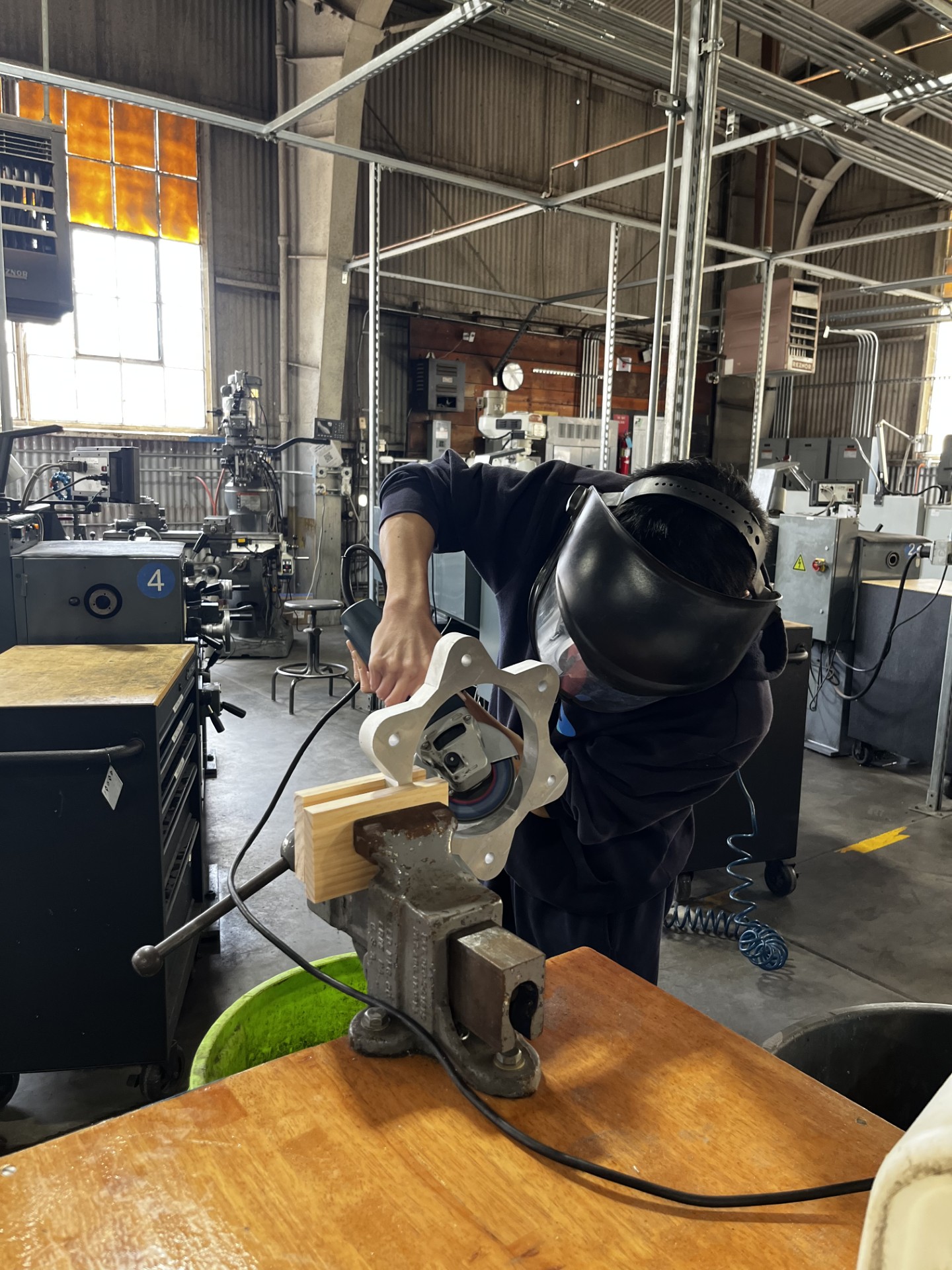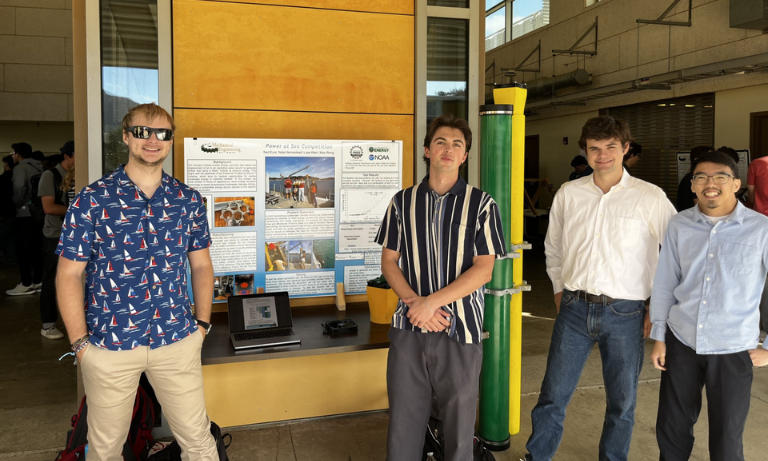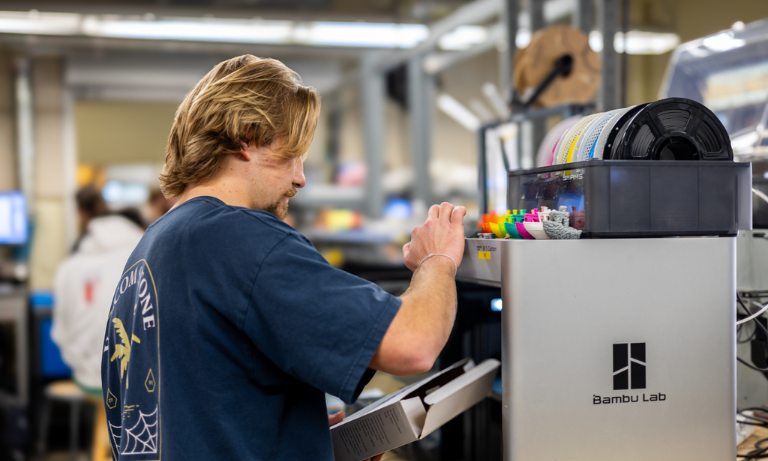Four Cal Poly mechanical engineering students were chosen to advance to the final stage of the national Power at Sea competition.
Ned Eyre, Nate Hempstead, Luke Wierl and Maximilian Wong worked under the guidance of Assistant Professor Amanda Emberly to develop their proposal for a concept that uses marine energy to power ocean-based activities.
“The concept was part of our senior design project,” Hempstead said. “For the competition itself, we had to submit a three-minute video and a 10-page technical narrative.”
The group was among 20 teams across the country that progressed to the final round of the competition and received $10,000 for their concept.
The Power at Sea competition is part of the U.S. Department of Energy’s Powering the Blue Economy initiative, a push for innovative and responsible ways to use the ocean as an energy resource.
“The main point of the project is to provide power to specialized areas like data centers, underwater charging stations, autonomous vehicles — things like that,” Hempstead said.
According to the students’ project proposal, most autonomous underwater vehicles need frequent human intervention to keep them running. The goal of their project is to minimize the amount of maintenance needed by using waves and tides for power generation and storage.
The team utilized the Mustang ‘60 Machine Shop on campus to develop a prototype.

“I think the Cal Poly Learn by Doing philosophy helped with this project a lot because we had experience working in fluid labs and machine shops,” Wierl said. “We had the confidence to make our own device.”
While the students had their pick of senior project ideas to pursue, they were drawn to the concept of working with water as a renewable energy source.
“I’m a big fan of maritime activities,” Hempstead said.
Wierl agreed that working on a project related to the ocean would be “super interesting.”
“I thought that a chance to create my own renewable energy device would be cool and a great way to learn more about the industry and where my career path could possibly go,” he said.
The next step of the competition is the DEVELOP phase, where groups will work to create a more concrete and usable product. The top groups from Phase 2 will split a cash prize totaling up to $1.5 million to further develop their creations.
By Taylor Villanueva


